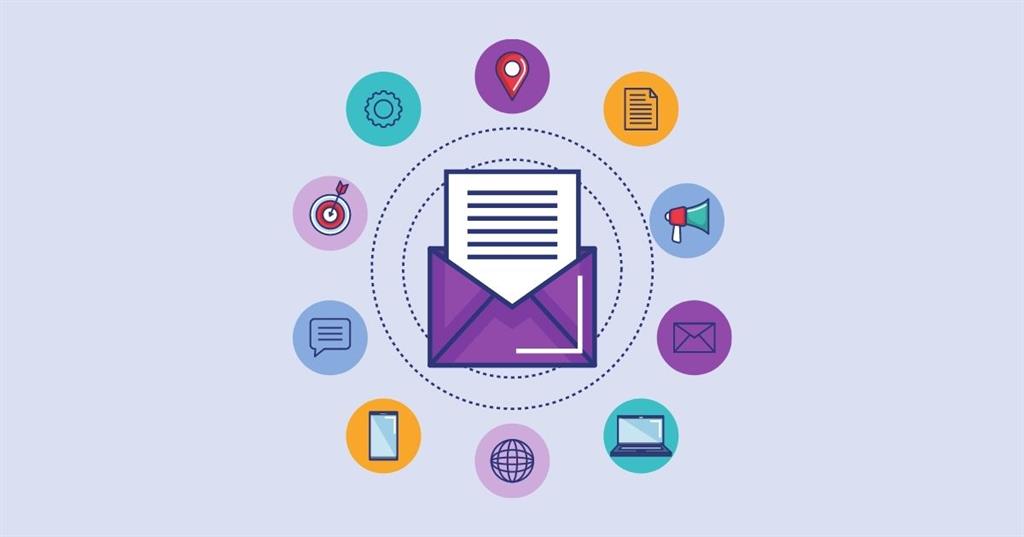
Email marketing is a powerful tool for engaging and
nurturing your audience, which helps your marketing system get maximum results. With over 1.8 billion users worldwide on Gmail alone, email
marketing isn't going anywhere.
Learn our top seven strategies you should start
doing, or avoid doing, to make email marketing work for your business.
Email Tips to Improve Performance
Build relationships and drive conversions by leveraging email to its full potential. By applying the tips below, you'll be able to get a higher ROI on your email marketing!
1. Have a goal for your email.
Each email you send should have a specific goal. If
you don’t know what you want the recipients to do, neither will they.
An email can have a variety of goals like reading a blog post,
filling out a sign-up form, scheduling a consultation, or redeeming a
promo code with a purchase on your website.
Give your subscribers a nudge by including a call-to-action button, links in the
text, and clickable images so they have multiple ways to complete the goal.
Everyone’s behavior is different, so having those options can help increase the
chances of completing your email's goal.
2. Use a real person's email address.
It’s a lot easier to trust an email when it’s coming from a
person, rather than a generic “noreply” email account. Boost your
engagement rates by personalizing the “from” email address to drive replies
from subscribers to a real person. Plus, your email is less likely to be flagged as spam!
3. Personalize your
emails.
Email personalization is more important than ever, but it's crucial not to overdo it. Personalizing the email with the
recipient’s name or company name is friendly, but going into too much detail comes off creepy.
You could also include product recommendations they might be
interested in based on past purchases or pixel tracking if you have the
infrastructure in place to facilitate that.
Always test personalized emails! Nothing is more awkward than receiving an email with "Hi [first_name]" in the subject line or copy. Make sure to set a default value like "friend" or "valued customer" if you don't have the subscriber's first name.
4. Craft your subject line.
Your subject line is the gatekeeper to your email. If it
doesn’t grab your audience’s attention, they’ll never even get a chance to see
the wonderful email inside.
That being said, don’t write subject lines that have nothing
to do with the email or offer inside. If they open the email and see that you
click-baited them, they’ll bounce and your click-through rates will
suffer.
Consider A/B testing subject lines and experimenting with
emojis or symbols. Adding a few here and there can help grab attention in the
mass of words flooding their inbox.
5. Test different times and days.
Tuesdays, Wednesdays, and Thursdays are the most popular
days for sending emails, but that doesn’t necessarily make them the best. In fact, inboxes
can often be overwhelmed on those days and your email ends up getting lost in the shuffle.
Experiment with different days and times to find what works
best with your audience. You could try sending emails earlier or later in the day or the weekend when there's less competition for your audience's attention.
6. Don’t stress about
unsubscribes (yet).
You can’t please everyone. People are bound to unsubscribe
from your email list.
The important thing is that people don’t mark you as spam.
If you get unsubscribed from, they just weren’t interested. It’s better that
they clear out than drag down your open rate.
Don’t stress over every unsubscribe, but pay attention to trends. If you lose a lot of people after a certain type of email, try another approach.
7. Figure out why you're getting marked as spam.
If you’re being marked as spam, you need to stop mailing
immediately and figure out why. Your domain reputation is at risk and
you could become blacklisted by email providers.
Another issue to check out is low open rates as it could be a sign that your emails are going into the spam folder rather than the inbox. There are many reasons that can cause emails to be flagged as spam, such as:
- A low sender score
- No permission to email subscribers
- Misleading subject line
- Sender information is inaccurate or missing
Whatever is causing your emails to go into the spam folder, it's critical that you investigate and fix the issue pronto.
Level Up Your Marketing System with Email
With these seven dos and don'ts, you'll be able to increase your email's ROI while enhancing perceptions of your brand. Email should ultimately elevate your marketing system, which is key to scaling your business.
From nurturing leads with follow-up emails to retaining more customers with targeted campaigns, email marketing software is an essential tool for any company.
Editor's Note: This post was originally published in January 2018 and has been updated for accuracy and comprehensiveness.